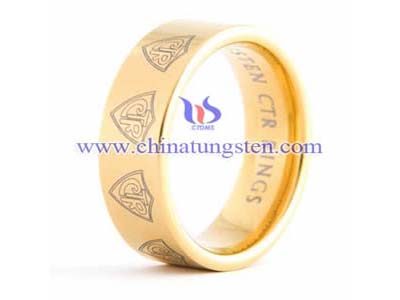What about the Counterfeit Gold-Plated Tungsten Bar Stories?

In my March 2 column, I told about the news story where an employee at the world’s largest private refinery had discovered a gold-plated 500 gram gold bar received from an unidentified bank. My column included an internet link where readers could themselves view the German television station report.
As is common for my columns, this particular one was picked up by several other websites. This particular column inspired a relatively harsh response from Robert Bradshaw. In an essay he wrote that was posted yesterday at http://www.marketoracle.co.uk/Article17820.html, he took me to task for repeating the story that China’s central bank last year had received at least four counterfeit gold-plated 400 ounce tungsten bars. He seemed concerned that I was perpetuating a myth about a massive number of counterfeit gold-plated 400 ounce tungsten bars that were supposedly manufactured during the 1990′s at the behest of the US government. Allegedly, about half of them were shipped to Fort Knox.
Until today’s column, I have never referred to the rumor of large numbers of counterfeit gold bars supposedly stored at Fort Knox. I’m well aware of the details of this rumor but, like Bradshaw, the possibility of the whole story being true is pretty far-fetched. I would need to dig up more hard confirmation of its veracity before discussing it. If such verification were available, I’m sure that this story would be headline news in the mainstream financial press.
The precious metals markets are not transparent. To get the best idea of what is really happening means listening to sources that often cannot be independently double-checked. In my writings, I try to be careful to listen only to those sources that have developed a track record of reliability. In this manner, I can often discern the truth long before it is publicly disclosed.
There have been infrequent reports over the decades of genuine gold bars that were drilled and filled with tungsten. I never discussed them because they were isolated small-scale activities. However, the story of large quantities of possible counterfeit large gold bars is a story that, if true, the public would really need to know.
The information about the possible counterfeit gold-plated tungsten bars came to me from sources with a good track record of reliability. Still, when I discussed them last fall, I was careful to indicate that they were rumors.
In my October 19, 2009 column at Numismaster.com, titled “What A Run On Gold Looks Like,” in the middle of the essay, I started one paragraph with, “There is a story now circulating that I have to classify as a rumor.” It goes on to discuss the possibility that some of the gold bars provided on the London exchange by the Bank of England may have been filled with tungsten. I further explained in that column that some of the gold bars held by the US and British governments were probably of lower purity, about 90%, than would be acceptable for delivery on the London market.
In the November 4, 2009 issue of Liberty’s Outlook I mentioned to readers, under the headline titled “Rumor—Counterfeit Gold Bars Discovered In Central Bank Vault,” about the China central bank story. I also listed a website address of a Chinese company offering gold-plated tungsten products that showed a photograph of a small gold bar on the home page of its internet site. I mentioned that if the China central bank story turned out to be true, it would have significant ramifications.
In the December 2, 2009 issue of Liberty’s Outlook, under the headline “Reasons Why Gold And Silver Are Likely To Rise Much Further,” I passed on subsequently received information that there were supposedly four counterfeit bars detected by China’s central bank and that the counterfeits came from bonded warehouses in the US. The discussion uses several qualifiers such as “allegedly” and “could.” At the end of that section I disclosed that reporters trying to cover this issue were sitting on additional damning information because they were unable to obtain sufficient corroborating evidence.
I believe these were the only instances where I wrote about possible counterfeit gold-plated tungsten bars before my March 2 column for CoinUpdate.com. Since last October, there has been ample time for either the Chinese central bank or the US bonded warehouses who supplied them with gold bars to have publicly addressed the rumors of counterfeit gold bars. None have done so. This silence could be interpreted two different ways. If the report of counterfeits is possibly true, the parties involved are just hoping that the story dies down. Or if the story is false, the parties involved may not have deemed it important enough to give it more widespread coverage by issuing a refutation.
If even a portion of the stories of counterfeit gold-plated bars turn out to be true, governments, central banks, brokerage firms, and owners of the bonded warehouses would have a strong incentive to hush up the information. In the past decade, a downpour of released unclassified US documents confirm that the US government has lied to the public for a long time about issues related to gold—going all the way back to 1918! So, I have significant suspicions that the US government today is not being honest about gold trading and inventories.
Bradshaw’s column was pretty much accurate when it cited specifics from my column last week. But it seems he used the column to discuss the issue that really bothered him—the rumors about counterfeit gold bars at Fort Knox—about which I have never before written. The way Bradshaw wrote his column, more than one reader thought that I might have irresponsibly passed along rumors on this subject as being established fact. While others, not named in Bradshaw’s column, may have done so, I only accept the credit (and occasional blame) for what I have written. When you try to be on the cutting edge of breaking information, sometimes you blow it. I think I did it properly this time.
By the way, while I am discussing government deception of the public, I do admit that politicians and bureaucrats are frequently truthful. Despite my suspicious nature, I do believe the testimony before Congress a few months ago by the general counsel for the Federal Reserve. When Scott G. Alvarez made an unqualified statement that all of the gold supposedly stored in Fort Knox was actually there, even though it has not been audited since the 1950s, I bet that’s true. However, Alvarez was not asked and did not volunteer any information as to who holds title to the gold stored at Fort Knox. I have significant suspicions that some of it is owned by other parties as a result of gold swaps, particularly the German central bank.


.jpg)


